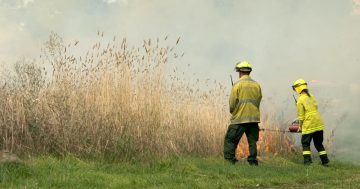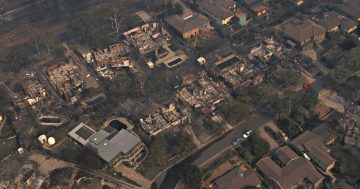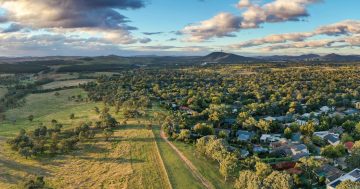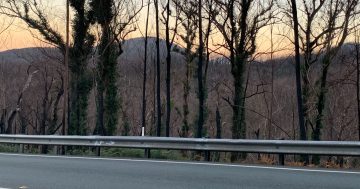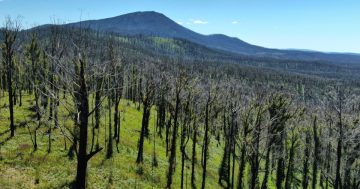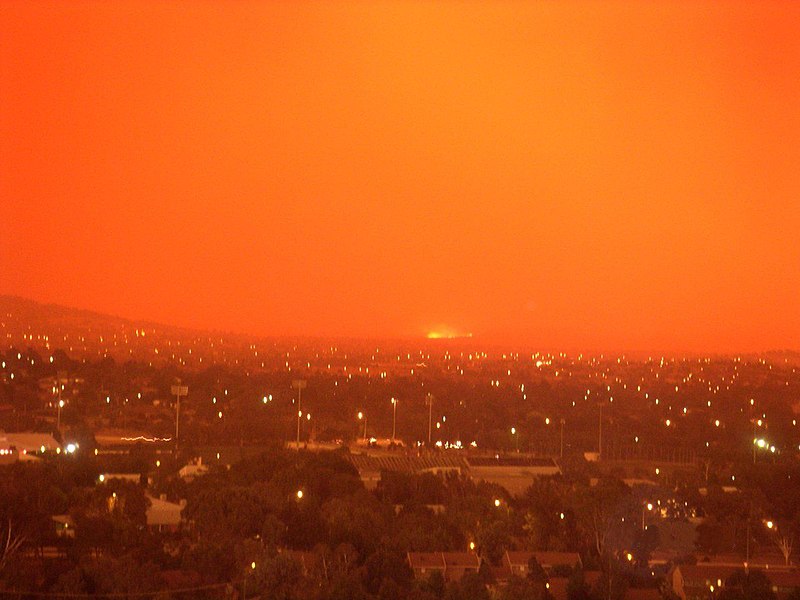
January 2003: 20 years on, new suburbs in the west and north are on the bushfire front line. Photo: File.
Two decades after the 2003 firestorm, the ACT’s firefighting forces are stretched thin along a longer urban-rural fringe and the government needs to do more so the Territory can adapt to the reality of more frequent and intense bushfires due to a changing climate, a new report has found.
The Report on ACT Bushfire Management since 2003 from the ACT Multi Hazard Advisory Council says that while much has been done since the 18 January disaster that killed four people and destroyed 488 homes, the government now needs to take a more strategic, long-term approach to bushfire management, including boosting the numbers of both professional and volunteer firefighters, as well as harnessing community-based responses.
“While the ACT Government has undertaken a strategic climate change risk assessment, it largely focuses on threats to government assets and services, and there appears to have been few practical actions implemented to combat the effects of climate change on bushfire risk, and those that have been implemented have been opportunistic rather than strategic,” the report says.
It calls for the shift to a whole-of-government approach and clearer objectives in the Territory’s bushfire management, including a five-year plan to further develop mitigation strategies and firefighting responses appropriate to the increased bushfire risks predicted for future climate scenarios.
The report says much can be learned from previous bushfires and the Environment, Planning and Sustainable Development Directorate (EPSDD) and the Emergency Services Agency should jointly commission experts to conduct an independent analysis of fire management programs since 2003, as well as bring together data that is currently poorly structured, spread across multiple systems and in some cases lacking.
This includes a focus on evaluating bushfire management practices to know what works and what doesn’t, such as the effectiveness of fuel reduction and fire suppression in different conditions.
EPSDD should also do more to integrate traditional Indigenous fire knowledge into land and fire management practices and boost the number of cultural burning programs.
The report says ESA and the Parks and Conservation Service staff numbers may no longer be enough to provide “significant, rapid improvement and innovation” in ways to prevent, fight and limit the impact of bushfires.
“With climate change, we will increase having prolonged, multiple disasters, which require considerable depth in capacity in our emergency services, both in the paid workforces in ESA and EPSDD and the volunteer workforce,” it warns.
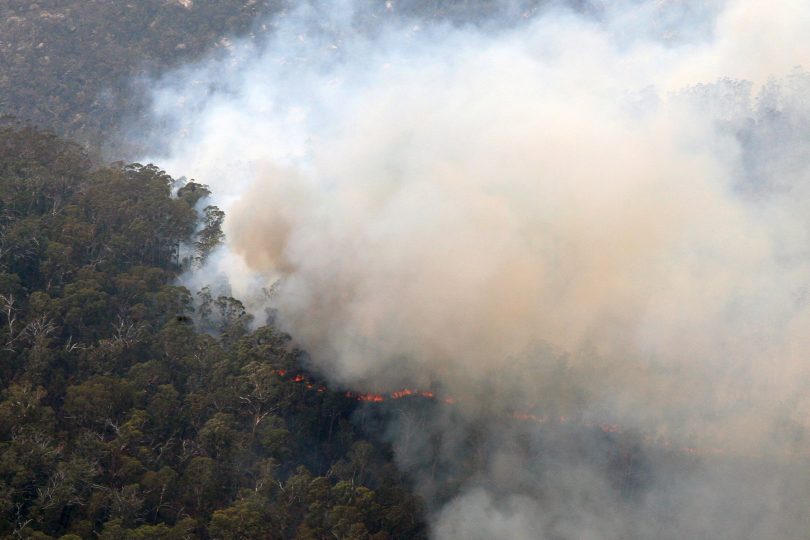
The 2020 Orroral Valley fire destroyed most of Namadgi National Park. Photo: Supplied.
It will require “either a significant change in operational resourcing, and/or strategic change at a policy, not operational, level”.
The report urges agencies to conduct 10-year capability plans to identify what will be required in the medium term for increasingly long concurrent multiple disasters, including campaign bushfires, and for them to be resourced appropriately.
It says the ACT Government should also conduct a forward-looking assessment of the annual resource levels required to implement the next and fifth Strategic Bushfire Management Plan due in 2025 and publish it with the Plan’s release.
The report recommends that bushfire protection along the rural-urban interface – which has grown with the development of the new Molonglo, Ginninderry and North Gungahlin suburbs – should automatically increase as that urban edge expands.
Community involvement in bushfire management also needs to be overhauled, including Community Fire Units taking on more responsibility at a local level, establishing units in the new suburbs and supporting those struggling to recruit members.
“We need a step change in our approaches to community engagement – moving from government-led one-way communications to a more integrated approach which includes supporting and empowering communities to identify their own resources, capabilities and needs, and to do their own planning for fire preparedness and response,” the report says.
Since the 2003 bushfires, the ACT has established 58 Community Fire Units (CFUs), managed under the ACT Fire and Rescue Service, but a number of new suburbs in the Molonglo Valley and North Gungahlin still lack any.
The report recommends the government broaden the scope of how people can offer their services and develop a five-year plan to build a much bigger volunteer workforce.
Fortunately, the appetite for joining volunteer RFS brigades and ESA units remains strong, with both having waiting lists.
The report says bushfire risk deserves to be given greater priority in planning legislation and decisions, and the report urges that mitigation works be fast-tracked.
The report continues its theme of independent advice by calling for credible experts to prepare bushfire risk assessments in planning processes.
It says the government should take urgent action to mandate that all new and substantially altered buildings within Bushfire Prone Areas comply with the Australian standard.
The report urges the adoption of new technologies and fostering innovation, and recommends EPSDD and ESA each have a research and development manager.
It says the government should establish a strategic investment plan to accelerate innovation and technological developments in fire forecasting, real-time information, bushfire detection and firefighting strategies.
Emergency Services Minister Mick Gentleman said the government would respond formally to the report but said some of the 23 recommendations could be worked through immediately.
“There are a number of really important points the council has recommended to us and the way we approach our bushfire management into the future, particularly around the five-yearly reviews,” he said.
“We also need to make sure our bushfire services are funded properly and securely into the future.”
Mr Gentleman said the government looked each year where it could boost resourcing to the ESA.
“Of course, it’s a challenge for government to manage resources in this way, but we’re looking at the report and that will help argue [the case] in cabinet,” he said.
Council chair Dr Sally Troy said greater policy development and capturing that community resource would also make a difference.
“But we crucially say we need to have a plan around what the expectation is, what is the community expectation of government and what is the government’s expectation of community and how do we resource to meet that,” she said.
The ACT Multi Hazard Advisory Council replaced the ACT Bushfire Council in December 2021.












